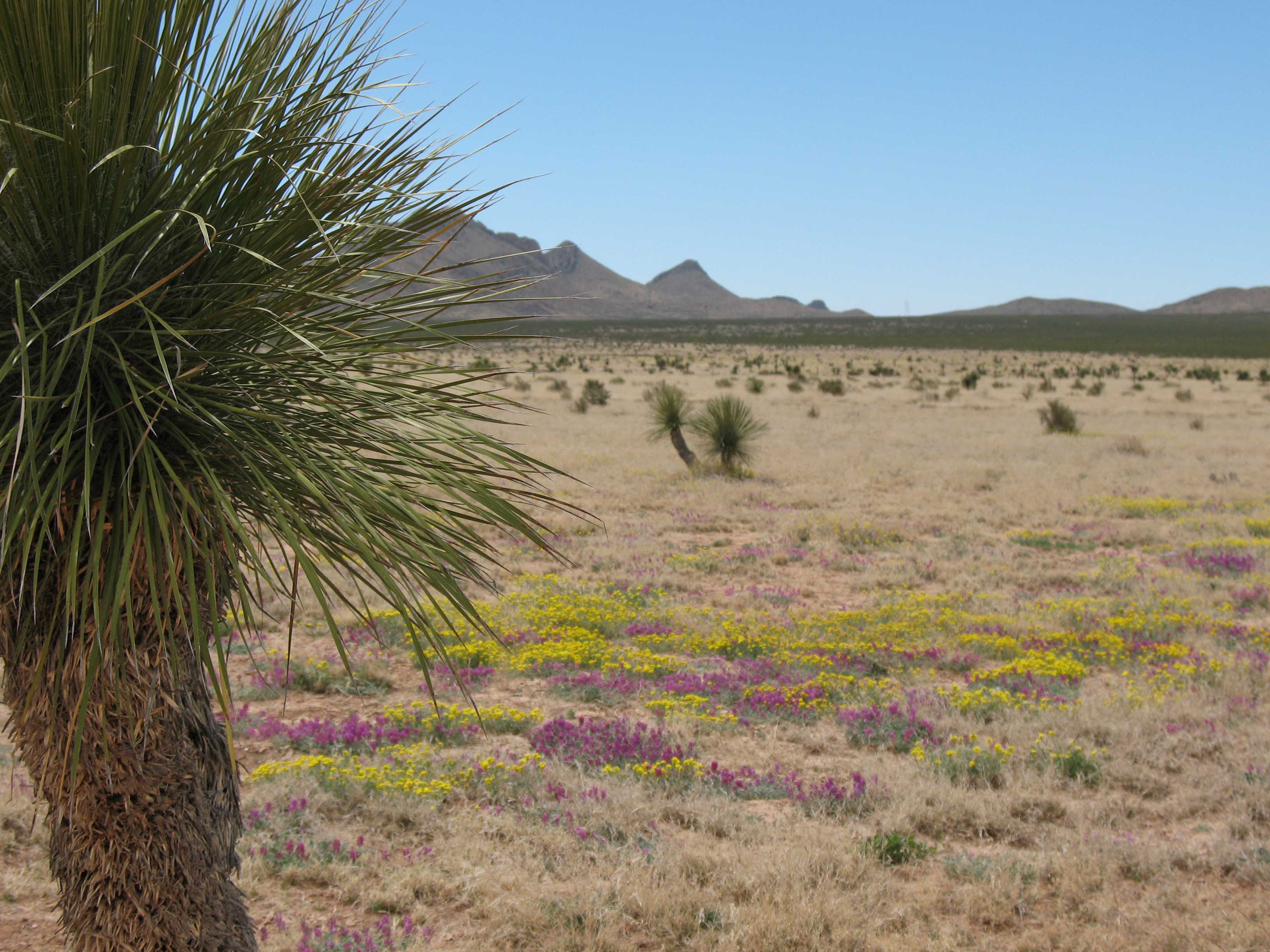
Novel ecosystems can emerge through many kinds of changes, including changes in mean climate, species invasions, and increased or decreased variability. Researchers at Jornada Basin LTER have highlighted the role of inter-annual climate variability in changing the outcome when an exotic grass species invades dry shrubland. Using a process-based model, they predicted three outcomes, depending on the degree of variability and timing relative to invasion.
Nonnative, highly flammable, grasses frequently invade shrubland ecosystems, increasing the chance of wildfire and mortality for native shrubs that are not adapted to fire conditions. Under relatively static conditions, the exotic grass dominates. However, with increasing climate variability in arid and semiarid regions, their model shows that grasses are less likely to achieve a steady state within the ecosystem. If severe droughts occur while shrubs can still re-establish, they may remain dominant in their native habitat. Alternatively, if these drought conditions occur after a shrubland has already been converted by invasive grasses, the system could crash, resulting in a die-off of the present grass vegetation.
This unvegetated succession stage could lead to increased runoff and loss of soil resources. The model demonstrates the concept of environmental variability leading to a dichotomous result, two possible shrubland states.










